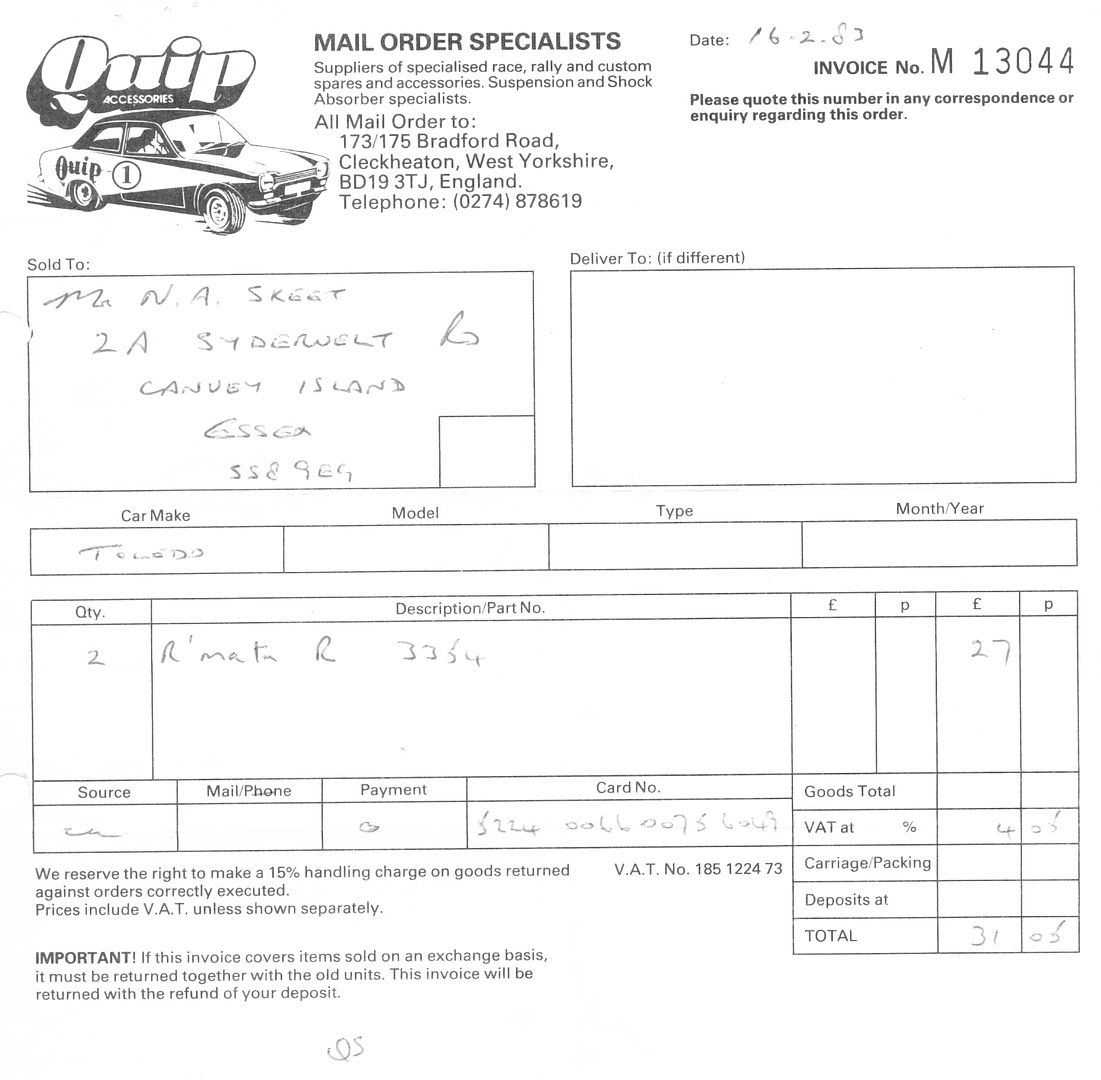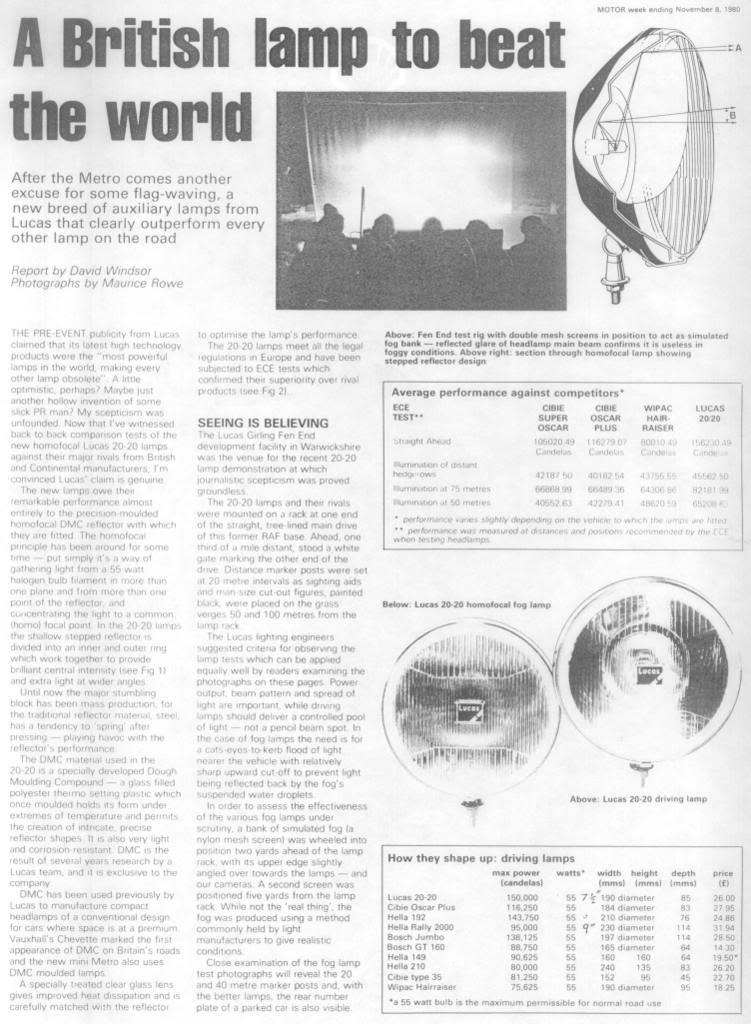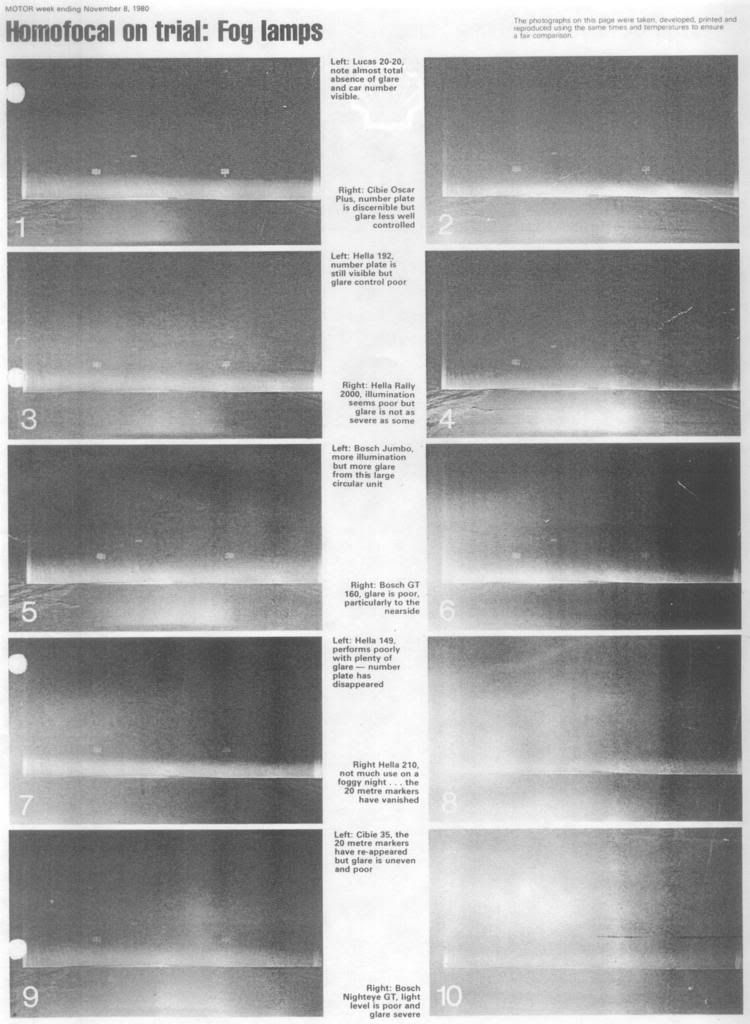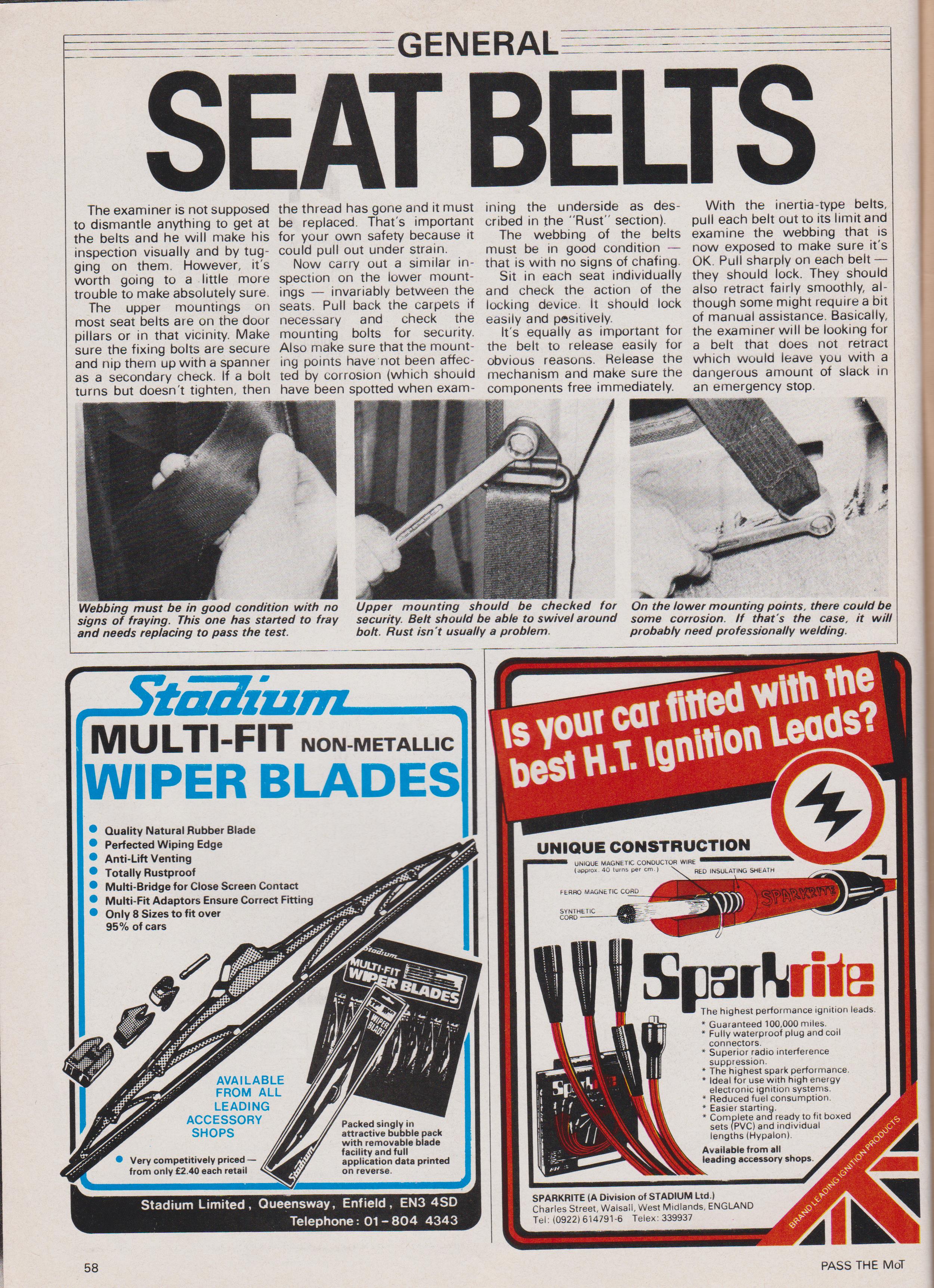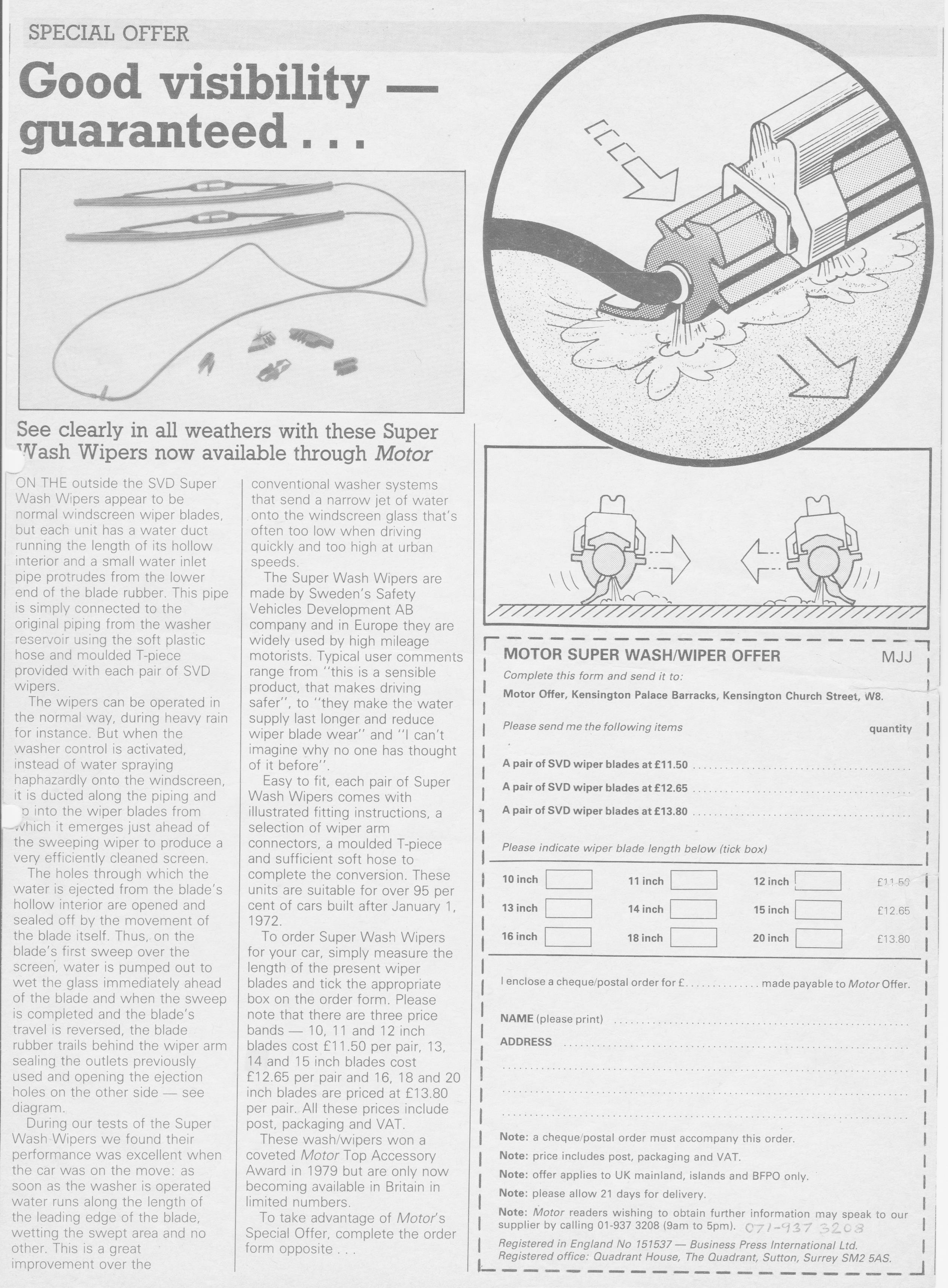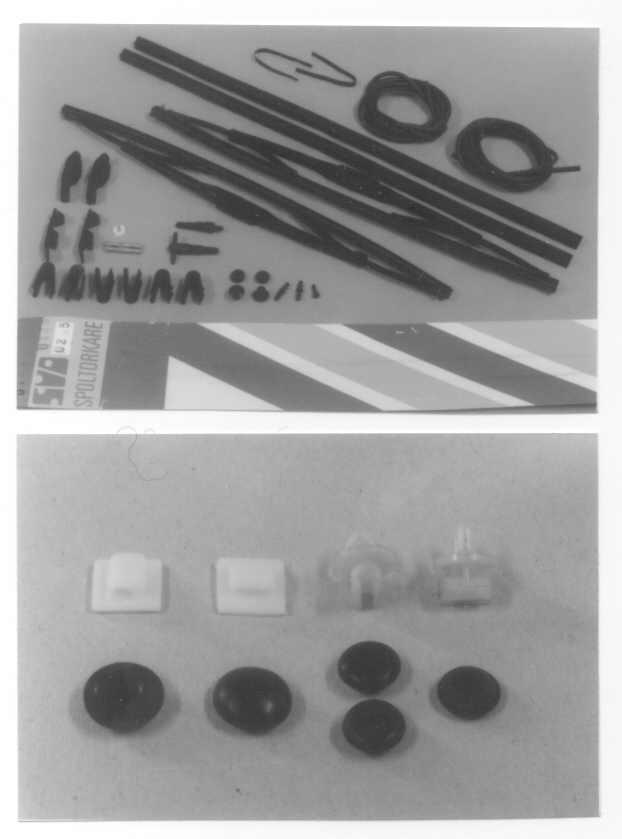Substituted Early-Model Triumph Dolomite 1850 Dashboard & Instruments - March 1984
Having already substituted a “four-headlamp” Triumph Dolomite adjustable steering column & steering wheel, plus associated switch-gear and nacelle during the winter of 1982/83, I started to think during late 1983 about also substituting a “four-headlamp” Triumph Dolomite sculptured dashboard with associated additional instrument-functions, 8-segment warning-light cluster and time-clock.
Board index » The Triumph Dolomite Club » The Public Bar - General Chat » “Factory-Standard, Alternative & Supplementary Instruments”
viewtopic.php?f=5&t=29524
To fit a large number of individual warning-light units, is often impractical, invariably untidy and might not be sited for optimum visibility. In many cases, these deficiencies may be overcome by fitting one or more warning-light clusters, such as that made by Lucas Industries Ltd., in Great Britain, which was original equipment for the Triumph Stag (a few exported to the USA), Triumph 1300, 1300TC, 1500, 1500TC, 2000 & 2500, Triumph Dolomite 1500HL, 1850, 1850HL & Sprint. The base plate cum circuit-board with bulb holders and electrical-connection pins with matching black, thermo-set plastic connector-block, are available with at least two different electrical-connection pin configurations.
Board index » The Triumph Dolomite Club » Dolomite-related [Start here!] » Customising Lucas 60 mm, 8-Segment, Warning-Light Clusters
viewtopic.php?f=4&t=29490
In addition to the sculptured dashboards being of a more attractive style, I felt that this would probably be easier, than trying to adapt the Triumph Toledo’s existing “straight-plank” style dashboard, to incorporate a 105 mm tachometer and a 52 mm voltmeter, plus various additional tell-tale & warning lights.
Triumph Toledo (early) standard dashboard
http://tse3.mm.bing.net/th?id=OIP.M4ee8 ... 0&pid=15.1
Although the “four-headlamp” FWD Triumph 1500 and RWD Triumph 1500TC sculptured dashboard, is of the same style as that of “four-headlamp” Triumph Dolomites, the instrument package offers only the addition of a voltmeter and three extra warning lights compared to that of the 1970~76 Triumph Toledo. Whereas the Toledo incorporates its 5 = 3+2 warning lights into the two 105 mm instrument housings (i.e. three in the speedometer and two in the water-temperature & fuel gauge cluster), the “four-headlamp” Triumph 1500TC & Dolomites house their 8 warning lights in a single 8-segment, 60 mm diameter warning-light cluster.
The Triumph 1500 & 1500TC lack both a 105 mm tachometer and a 60 mm diameter time-clock, but have a 105 mm speedometer (no integral warning lights) and a single 105 mm instrument housing (no integral warning lights), incorporating a cluster of water-temperature gauge, fuel gauge & voltmeter, as can be seen in the FWD Triumph 1300/1500 workshop manual and the following topic thread.
FWD Triumph 1500 instrument panel
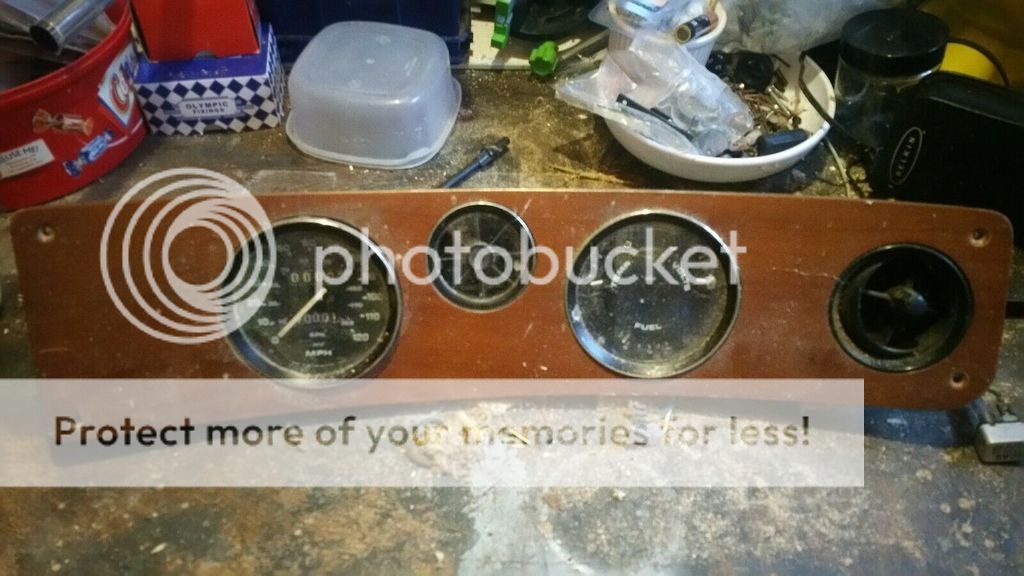 RWD Triumph 1500TC literature - dashboard
RWD Triumph 1500TC literature - dashboard
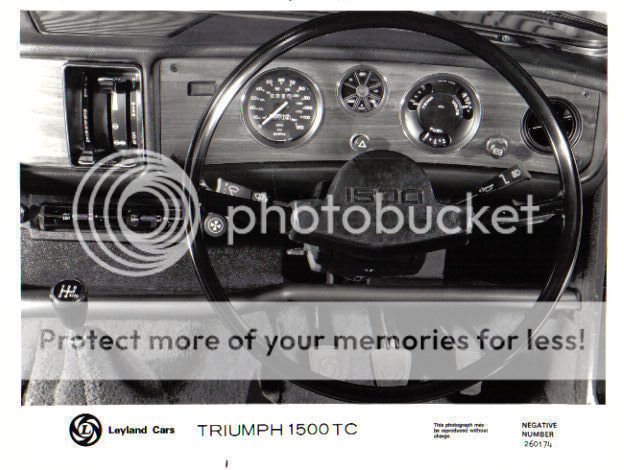 John Millward, Triumph 1300/1500 from 1965 ~ 1973, Car Repair Manual, Autodata, 1980, ACRM277, ISBN 0-85666-049-3 – Fig. M:21 Details of the facia attachment and associated components on 1500 models, Body Fittings section, Page 145
Board index » The Triumph Dolomite Club » Restoration Projects » Triumph 1500TC Now A Rolling Resto
John Millward, Triumph 1300/1500 from 1965 ~ 1973, Car Repair Manual, Autodata, 1980, ACRM277, ISBN 0-85666-049-3 – Fig. M:21 Details of the facia attachment and associated components on 1500 models, Body Fittings section, Page 145
Board index » The Triumph Dolomite Club » Restoration Projects » Triumph 1500TC Now A Rolling Resto  Most Photo's Restored
Most Photo's Restored  https://forum.triumphdolomite.co.uk/vie ... 19&t=13940
https://forum.triumphdolomite.co.uk/vie ... 15#p137426
https://forum.triumphdolomite.co.uk/vie ... 19&t=13940
https://forum.triumphdolomite.co.uk/vie ... 15#p137426
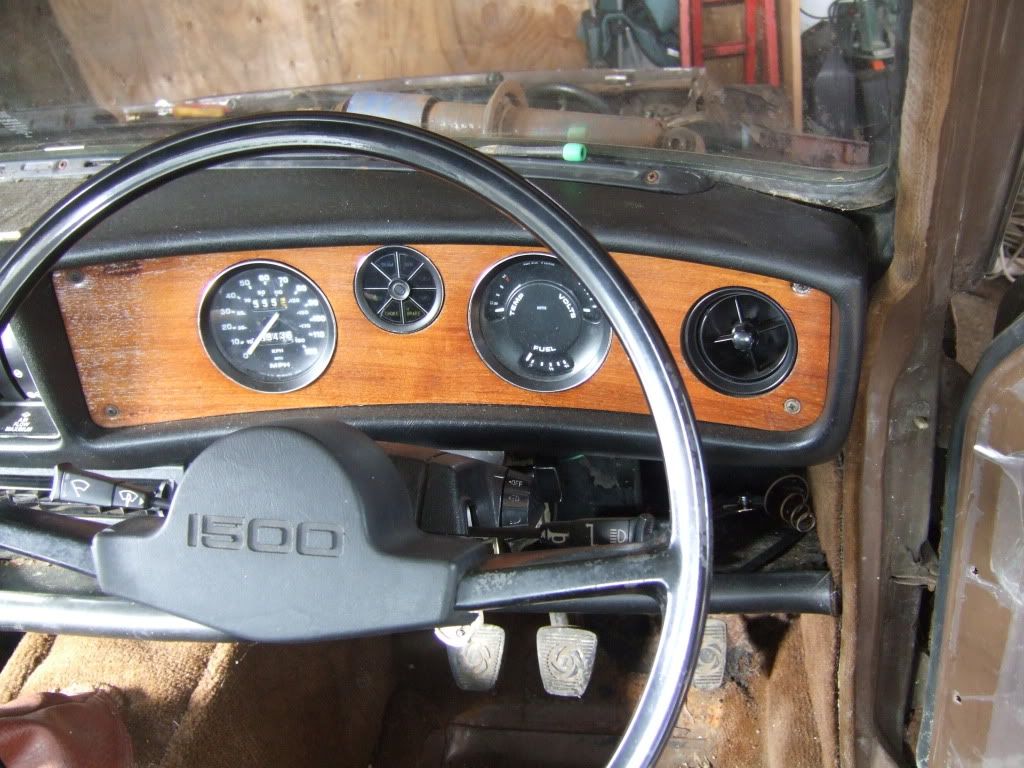 https://forum.triumphdolomite.co.uk/vie ... 80#p210578
https://forum.triumphdolomite.co.uk/vie ... 80#p210578
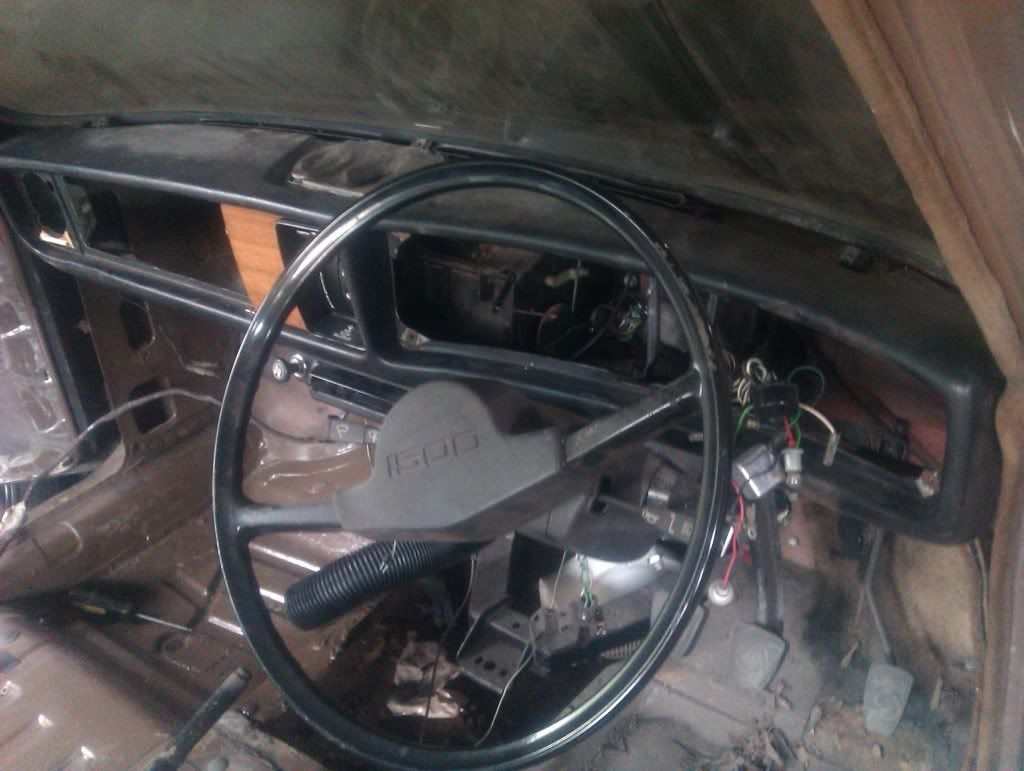

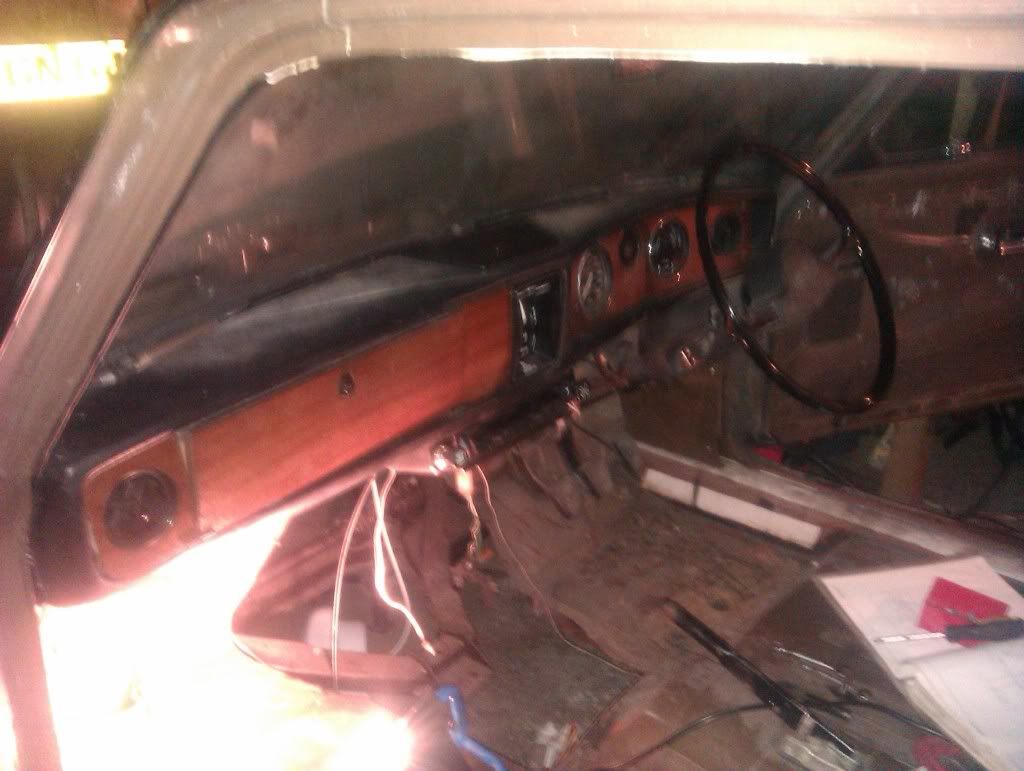
In contrast, the “four-headlamp” Triumph Dolomites’ dashboard & instrument panel, features a 105 mm speedometer (no integral warning lights), 105 mm tachometer (no integral warning lights), 52 mm water-temperature gauge, 52 mm fuel gauge, 52 mm voltmeter, 60 mm 8-segment warning-light cluster & 60 mm time-clock (located in the small separate panel, to the left of the heating & ventilation control levers); providing two additional instrument functions and a time-clock, compared to that of the Triumph Toledo.
Triumph Dolomite (early) Dashboard
 1972 Triumph Dolomite 1850 literature - dashboard etc
1972 Triumph Dolomite 1850 literature - dashboard etc
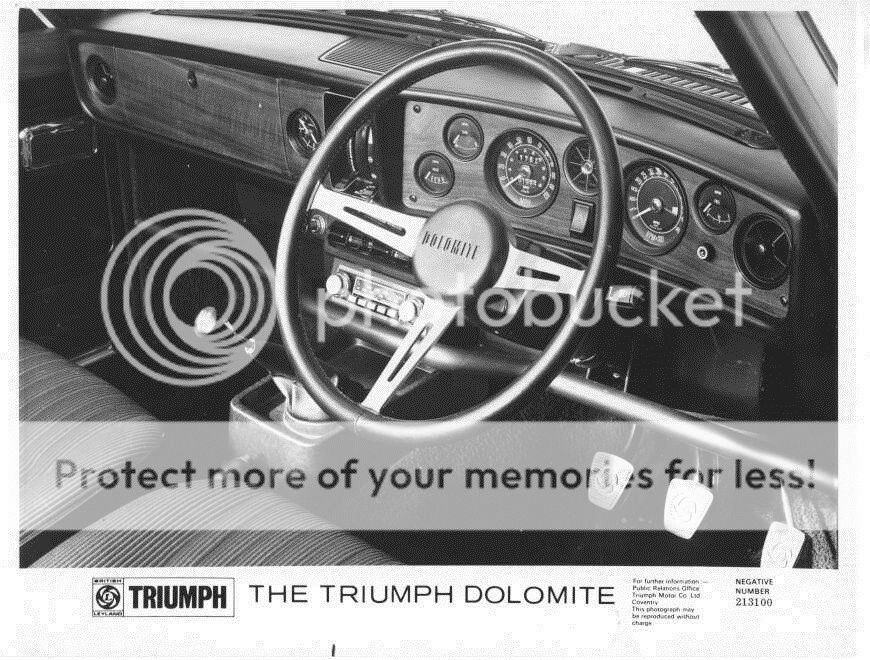
I liked the 1970~74 Triumph Toledo style instrumentation, but wasn’t particularly keen on the more modern-style instruments fitted to the 1975~76 Triumph Toledos, 1975 Triumph 1500TC and 1975~80 Triumph Dolomites. However, the instruments of the early-model Triumph Dolomite 1850, were similar to those of my 1974 Triumph Toledo; albeit with a different style of centre-hub & pointer for the speedometer and tachometer, which could probably be replaced with a centre-hub & pointer of the same style as the 1970~74 Toledo speedometer.
I was also uncertain in those days about the relative calibration of the speedometers and their drive mechanisms, that were fitted to the various Dolomite 1500HL, 1850, 1850HL & 2000 Sprint models, whose transmission final-drive ratios differed from the 4•11:1 of the Triumph Toledo 1300. The Toledo 1300 and Dolomite 1850 speedometers had calibrated speed scales of 0~100 mph & 0~160 km/h and 0~120 mph & 0~190 km/h respectively. Given that a factory-standard Triumph Toledo 1300 probably has a maximum speed of less than 85 mph, there would be no useful purpose in using a speedometer whose calibrated scale extended beyond 100 mph.
British specification, 1974 Triumph Toledo 1300's Smith's speedometer
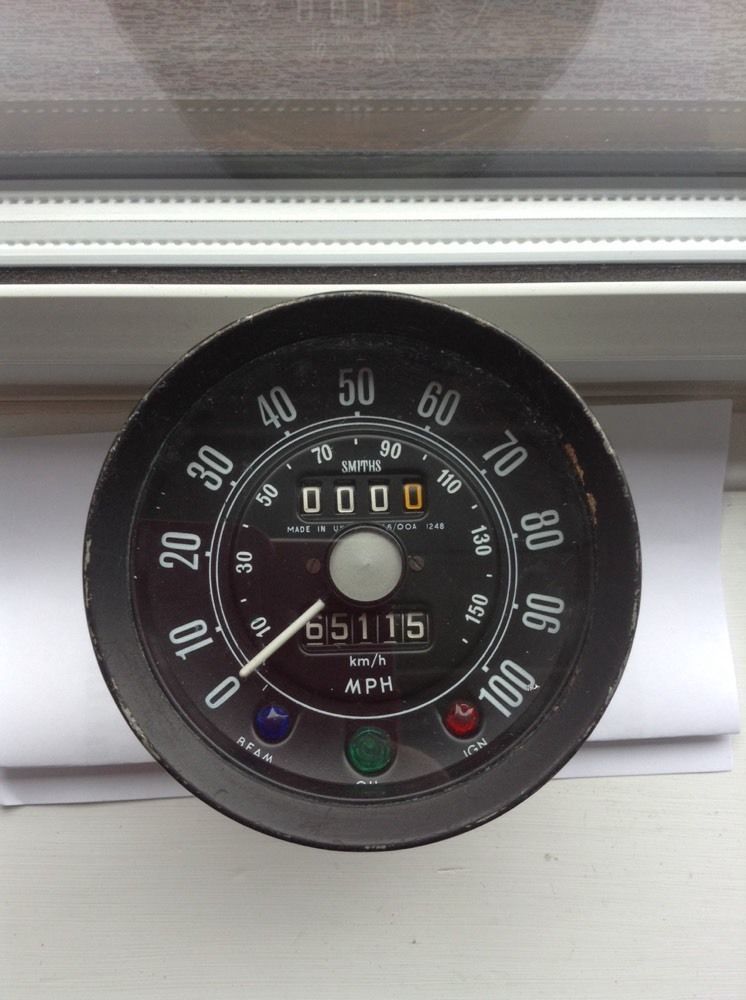
Besides that, the statutory maximum speed limits in most if not all European countries, are either 70 mph, 110 km/h (i.e. 68¾ mph) or 130 km/h (i.e. 81¼ mph), so unless one intended to race a modified, souped-up Triumph Toledo on a private track, off the public highway, this is another reason why a speedometer scale extending beyond 100 mph & 160 km/h would be superfluous! The Triumph GT6’s 140 mph dial face, is even less appropriate to a Triumph Toledo 1300; 140 mph being exactly twice the British statutory maximum speed limit of 70 mph, so only half of the speedometer’s scale would ever be used!
My Ideal Dashboard & Instrument Combination
Hence, I deduced that the ideal solution would be to fit an early-model Triumph Dolomite 1850 dashboard (complete with its associated instrumentation), and substitute my original 1970~74 Triumph Toledo style speedometer in place of the Triumph Dolomite 1850 speedometer. This would have the added advantage of retaining the three integral warning lights for ignition (i.e. alternator voltage), low-oil-pressure and headlamp main beam, that were incorporated into the Toledo speedometer; using just two of the warning-light segments in the Dolomite’s 8-segment warning-light cluster for the left-hand & right-hand direction-indicator tell-tale lights, leaving six warning-light segments for other existing or future planned applications, such as:
1) Rear fog lights
2) Front fog lights
3) Heated rear window
4) Auxiliary driving lights
5) Trailer direction-indicator function
6) Supplementary, high-intensity reversing lights
In late-November or early-December 1983, I learned that an early-model Triumph Dolomite 1850 dashboard was available for sale at a small car breaker’s yard in Buckinghamshire, not far from CIT – Cranfield. Hence, on Wednesday, 7th December 1983, I purchased for £20•00, a complete early-model Triumph Dolomite 1850 dashboard, including instruments (i.e. speedometer, tachometer, fuel gauge, water-temperature gauge, voltmeter, time-clock, instrument-illumination dimming potentiometer & 8-segment warning-light cluster), heated rear-window switch with integral tell-tale light (identical to that in my Triumph Toledo), hazard warning light system with central rocker switch, and plastic windscreen-demisting duct & metal grille. The dashboard had already been removed from the donor vehicle, so I didn’t have the opportunity to see how this interfaced with other systems in the car!
The 1974 Triumph Toledo didn’t have a hazard warning light system, so having the complete switch, relay & wiring from the Triumph Dolomite 1850 was an added bonus. Having a time-clock in a style that complemented the other instrumentation was also a nice added extra, which negated the need to look at my wrist watch that would be more hazardous when driving.
In common with my 1974 Triumph Toledo’s original dashboard, the early-model Triumph Dolomite 1850’s dashboard, had brackets fastened to the underside, for the speedometer’s trip-counter, remote-control zeroing cable & knob, and the heated rear-window’s dashboard switch with integral tell-tale light. Neither of these are a feature of late-model Dolomite dashboards, which have a plain square-knobbed on/off switch (no integral tell-tale light) in the instrument panel for the heated rear-window and the speedometer trip-counter’s zeroing knob, protrudes through the speedometer lens.
Sadly the Dolomite 1850 tachometer was non-functional for a reason I have yet to discover, despite correctly matching the electrical connections for this early-type tachometer, as given in the photocopied Triumph Dolomite Sprint electrical-circuit diagram that I had obtained from Mark Tothill! I had hoped to use this tachometer with a spare centre-hub & pointer, substituted from a defunct, early-Toledo speedometer, to closely match the style of my 1974 Toledo speedometer.
I also hoped to incorporate into the tachometer, three or more integral warning-light holders, from two defunct early-Toledo speedometers, but I have yet to find a way to do this. If I had discarded the non-functional tachometer, I could have retained my Toledo’s original 105 mm instrument housing, incorporating the fuel gauge, water-temperature gauge and two direction-indicator warning lights. Alternatively, one could substitute a FWD Triumph 1300’s 105 mm instrument housing of the same style (albeit with a chromium-plated bezel), which also incorporates an ammeter.
This would have made two of the 52 mm instrument-panel apertures available for two supplementary gauges, for functions such as oil-pressure, oil-temperature, inlet-manifold vacuum or electrical current (i.e. ammeter); four additional functions I intend to have in the future, in my new substitute, custom-made, curved-profile instrument panel, as well as finally having a functional 105 mm tachometer of some sort.
« Steve Boitoult wrote: Alastair Cox Its NOT easy or quick to sub the curved dash into a flat dash car. The mounts at the screen interface are different, the heater unit itself is different and the steering column support bracket is different, besides the already mentioned wiring loom, switchgear and parcel tray alterations required. »
« If you're going to do it (and it HAS been done by a number of owners in the UK) it's best to have a donor car handy and get EVERYTHING you can from it, dash, heater, column, loom, parcel tray, vent and speaker panels etc and be prepared to make up the screen area mounts as you go, or drill out the spot welds and replace the mount panel! »
« A further complication for you is that the loom you would need for a 1300 (or 1500) engined car is the one from a 1500HL, which I gather is not available in NZ. »
Changes in Electrical Wiring
Contrary to Steve Boitoult’s comments some time ago in the Facebook Triumph Toledo interest group, to Alistair Cox in Wellington, New Zealand, adapting the Triumph Toledo 1300’s or 1500's existing electrical wiring system to incorporate a “four-headlamp” Dolomite’s sculptured dashboard & instruments, is not fundamentally difficult, but it does necessitate a methodical approach to reconfiguring the electrical connections, and changing as necessary, which connection pins & sockets are inserted into which multi-way connector blocks; including the possible substitution of alternative multi-way connector blocks with a different number of pins & sockets.
It was certainly
unnecessary to substitute a Triumph Dolomite 1500HL’s complete wiring loom as Steve suggested, but there might be some advantage to doing this, if one also intends to substitute a 1500 engine’s pre-engaged starter motor and/or substitute a four-headlamp system and/or implement the warning / tell-tale light facilities for low fuel level, carburettor choke employed, handbrake engaged & brake-circuit failure.
I have since acquired in 2018, a late-model, 1979/80 Triumph Dolomite 1500HL Automatic’s complete wiring loom (including rear fog-lamp wiring, that appears to be red / blue; contrary to the provisions of BS-AU7a, which states that this colour code would be used for a front fog light fuse to a fog light switch), which in the future, I might use in whole or in part, together with various supplementary electrical cables, to facilitate intended future upgrades.
During the 1980s, I certainly salvaged those sections of a “four-headlamp” Dolomite wiring loom, that connected switches, relays, gauges and the warning-light cluster to the main wiring loom; including the almost-essential, black, thermoset-plastic (possibly “Bakelite” or something similar), bespoke, circular, multi-way connector block (with captive female copper connectors, which are removable and reusable for customisation purposes), which fits onto the back of the warning-light cluster. However, substituting a complete wiring loom, is not for the faint-hearted or those who are inexperienced in automotive electrical wiring circuits and wiring colours.
Given that in early-1984, I was still using my Triumph Toledo 1300 every Friday & Sunday evening, to travel between Canvey Island and CIT – Cranfield, I needed to complete the process in self-contained stages and finally complete the transformation, by simply disconnecting (i.e. unplugging) the multi-way connector blocks to the original Toledo dashboard and reconnecting the same multi-way connector blocks to the substitute Dolomite dashboard’s & instrument panel’s wiring and multi-way connector blocks. This approach would also enable quick & easy removal of the complete Dolomite dashboard & instrument panel, without removing any individual switch, relay or instrument wiring connections, if and when future maintenance or modification work was required!
It was impractical (and maybe impossible) to reconfigure the early-model cars’ flexible, grey-elastomer, multi-way connector blocks with moulded-in male & female connectors, but the later clear-plastic, multi-way connector blocks (possibly made by Rists; a constituent company of Lucas Industries) can be readily reconfigured, by depressing with a narrow-bladed electrical or instrument screw-driver, the retaining barbs of the captive male & female brass connectors and removing them from the connector blocks.
Board index » The Triumph Dolomite Club » Dolomite-related [Start here!] » Lucas Rists terminals
https://forum.triumphdolomite.co.uk/vie ... =4&t=36869
During 1982~84, at local car breakers’ yards, I salvaged a selection of several second-hand clear-plastic and some similar coloured-plastic (typically black, but possibly red and green as well), multi-way connector-blocks of various sizes (i.e. 1-way, 2-way, 3-way, 5-way, 7-way & 9-way) from other Triumph Toledo and/or Dolomite cars.
Some later BLMC cars (e.g. Austin-Rover Metro, Maestro & Montego) had multi-way connector-blocks with an even greater number of captive connectors and were also sources of 1-way and 6-way relay mounting cum connector blocks.
Six-position, relay mounting cum connector block (ex Austin Montego)
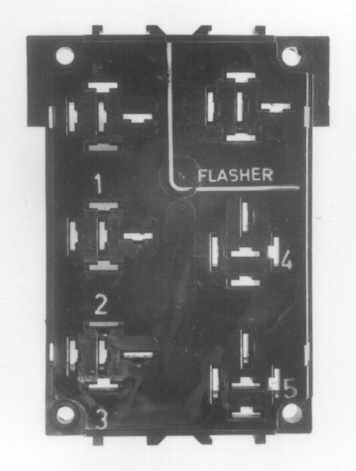
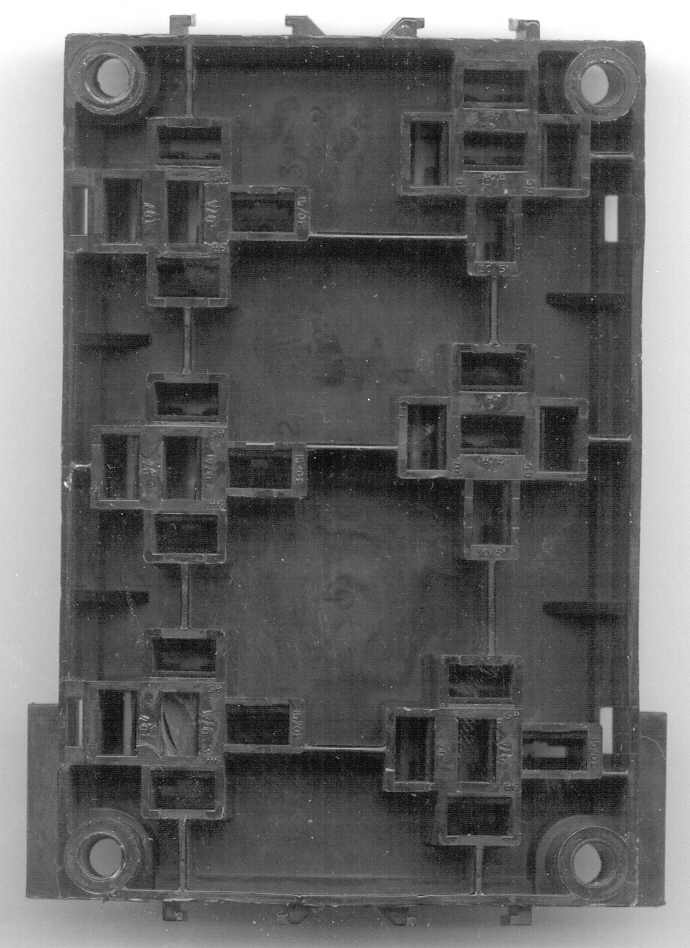 Single-position, relay mounting cum connector blocks (ex Austin Montego and/or Maestro and/or Metro and Vauxhall Cavalier Mk.2)
Single-position, relay mounting cum connector blocks (ex Austin Montego and/or Maestro and/or Metro and Vauxhall Cavalier Mk.2)

I have some white, black & red 20-way connector-blocks, from one or more BLMC cars, but I have yet to attempt removing the brass connectors and recycling them. Further investigation of currently available, multi-way connector blocks, revealed that these are Lucas-Rists TTS connectors, coloured either black, white, red or blue, in 3-way, 5-way, 7-way, 9-way & 20-way forms; stocked by 3 Way Components, in Luton, Bedfordshire. It appears that the captive brass connector pins & sockets are identical or very similar to those used in the Toledo & Dolomite.
https://www.3waycomponents.co.uk
https://www.3waycomponents.co.uk/Automotive-Connectors
https://www.3waycomponents.co.uk/Automo ... Connectors
https://www.3waycomponents.co.uk/Automo ... ector-Kits
https://www.3waycomponents.co.uk/Automo ... r-Housings
https://www.3waycomponents.co.uk/Automo ... eeper-Bars
https://www.3waycomponents.co.uk/Automo ... -Terminals
Some of the multi-way connector blocks that I salvaged, were used when I reconfigured the wiring for the main lighting switch and windscreen wiper & washer switch, in order to substitute the Dolomite HL adjustable steering column with associated nacelle & switches during Winter 1982/83. At that time, I was unaware of any sources of replacement brass connectors, so I carefully un-crimped the salvaged ones using a narrow screw-driver blade and reused them.
I believe these or similar multi-way connector-blocks and associated connectors are still available new, from various auto-electrical components suppliers such as Vehicle Wiring Products, Automotive Connectors, Auto Electric Supplies, Auto Electrical Spares, Car Builder Solutions, 12 Volt Planet and Polevolt etc.
https://www.vehiclewiringproducts.co.uk
https://www.automotiveconnectors.com/
https://www.autoelectricsupplies.co.uk/
https://www.autoelectricalspares.co.uk
www.carbuildersolutions.com
https://www.12voltplanet.co.uk
http://polevolt.co.uk/
In particular, Auto Electrical Spares list Lucas CWB multi-way connector blocks, of the same or similar pattern to those used on the late-model Triumph Dolomites. The male & female plastic mouldings (into which the captive pins & sockets are inserted) are available in 1-way, 2-way, 3-way, 4-way, 5-way, 7-way & 9-way versions. The plastic mouldings, plus the individual pins and sockets to be inserted, are sold separately. Compared to my full carrier-bag job-lot of multi-way connector blocks and other electrical-system components, bought second-hand from the local car breaker’s yard, these seem horrendously expensive!
https://www.autoelectricalspares.co.uk/ ... -127-c.asp
Replacement Lucas-Rists male & female captive brass connectors that appear to be of the same type, that fit within the moulded-plastic multi-way connector blocks used in the Triumph Toledos & Dolomites, are available from Automotive Connectors.
https://www.automotiveconnectors.com/co ... ls/page/3/
https://www.automotiveconnectors.com/lu ... 16awg.html
https://www.automotiveconnectors.com/lu ... minal.html
https://www.automotiveconnectors.com/lu ... 16awg.html
Historically, I can recall a listing of the same or similar multi-way connector blocks in the paper catalogues (I have at least one from the 1990s archived somewhere!) published by Vehicle Wiring Products, but I can no longer find these on the Internet website.
https://www.vehiclewiringproducts.co.uk/c-50-connectors
https://www.vehiclewiringproducts.co.uk ... connectors
https://www.vehiclewiringproducts.co.uk ... connectors
My reconfiguration task was probably made much easier by having access to the ELECTRICAL sections of the two official workshop manuals (brown loose-leaf, ring-files with four D-rings), published by BLMC Triumph for the Triumph Toledo and the Triumph Dolomite Sprint. As well as having electrical-circuit wiring diagrams, these manuals also show the wiring colours and connector configurations within the multi-way connector blocks.
The things of which one needed to be sure, was which wiring-colours and electrical-connections corresponded to which systems and components, for which appropriate electrical-circuit wiring diagrams are almost essential. A feature of the Dolomite HL & Sprint wiring diagrams, is that they also show the terminal numbers for all of the electrical connections to the 8-segment warning-light cluster, which is quite useful if one wishes to customise the warning-light applications.
The Triumph Toledo & Dolomite wiring diagrams are non-coloured (i.e. black line-drawings on white-paper), so the cables are labelled with a colour code (the logic of which eludes me!) as follows: N – Brown, U – Blue, R – Red, P – Purple, G – Green, LG – Light Green, W – White, S – Slate (i.e. dark grey), B – Black, K – Pink and O – Orange. Many of the cables have a main colour and a narrow band of tracer colour. For example, the light-green & brown cable might be labelled as either LGN or LG/N on the circuit diagram. To the best of my knowledge, the wiring colour-coding follows the provisions of the then current edition of the British Standards Automotive Wiring Colours BS-AU7a.
http://www.peterrenn.co.uk/archive4.html
http://www.dimebank.com/LucasColours.html
http://www.mgb-stuff.org.uk/colourcodes.htm
https://www.autoelectricsupplies.co.uk/ ... ng_colours
I have access to only a few of the electrical circuit wiring diagrams for the various model-year variants of the Triumph Toledo 1300 & 1500, Triumph 1500 & 1500TC and Triumph Dolomite 1300, 1500, 1500HL, 1850, 1850HL & Sprint, so the following summary is largely based upon my personal experience of installing an early-model Triumph Dolomite 1850 dashboard & instruments in a 1974 Triumph Toledo 1300; both of which have two direction-indicator warning lights and both of which lack a heated rear-window warning light in the instrument panel. For early-model vehicles with a heated rear window, the associated slender, circular pull-switch with integral tell-tale light is fitted in a supplementary mounting bracket beneath the dashboard.
Late-model vehicles have just a single direction-indicator warning light and also have a heated rear-window warning light in the instrument panel. For late-model vehicles with a heated rear window, the associated square-knobbed pull-switch is fitted into the instrument panel and the separate tell-tale light is incorporated into either the dual-gauge cluster of the Triumph Toledo 1300 & 1500 and Dolomite 1300 & 1500, or the 8-segment warning-light cluster of the Triumph Dolomite 1500HL, 1850HL & Sprint. Hence, if one is mixing and matching between early and late model-years, then one needs to delve further into the logic of how the warning-light systems function and whether the wiring colours used are consistent between the various model-years concerned.
The black, thermo-set plastic, circular multi-way connector block that connects to the 12 brass pins on the back of one of my late-model, 8-segment warning-light cluster, with light-brown circuit board, has the following factory-standard wiring colours to the given terminal-pin numbers.
1. W (white) – ignition-controlled positive supply
2. BW (black / white) – hand brake
3. GR (green / red) – fuel level ?!?
4. NY (brown / yellow) – ignition [alternator]
5. WB (white / black) – heated rear window
6. UW (blue / white) – main beam
7. GW (green / white) – direction indicators
8. B (black) – earth
9. W (white) – ignition-controlled positive supply
10. WN (white / brown) – oil pressure
11. GO (green / orange) – rear demist ?!?
12. WU (white / blue) - choke
1973 Triumph Toledo & early-model Triumph Dolomite Sprint, warning & tell-tale light functions and wiring colours
NY (brown / yellow) – ignition warning light to alternator
UW (blue / white) – main-beam warning light to headlamp dip switch
GW (green / white) – right-hand indicator warning light
GR (green / red) – left-hand indicator warning light
WN (white / brown) – oil-pressure warning light to oil-pressure switch
Early-model Triumph Dolomite Sprint, warning & tell-tale light functions and wiring colours
GO (green / orange) – fuel-level warning light to fuel-level switch
WU (white / blue) – choke warning light to choke switch
BW – black / white – handbrake warning light to handbrake switch
Warning or tell-tale lights also have either an ignition-controlled positive supply cable – W (white) or earth / ground cable B (black)
WARNING – There appears to some disparity between the application of some wiring colours for early-model and late-model Triumph Toledos and/or Dolomites, so one needs to carefully check which wiring colours serve which functions on one’s own car and that of the donor car.
The table of British Vehicle Wiring Colours hosted by Auto Electric Supplies, states that green / orange cable would link the fuel-level switch in the fuel tank, to the low-fuel-level warning light on the instrument panel and that green / red cable would link the direction indicator switch to left-hand flasher lamps; which is consistent with the early-model Triumph Toledo & Dolomite wiring colours.
Physical Installation of the Sculptured Dolomite Dashboard
When I substituted the Dolomite adjustable steering column in 1982, I discovered that there was a space between the mounting brackets and the front bulkhead below the windscreen, owing to differences between the Toledo’s flat-panel dashboard and the Dolomite’s contoured dashboard with separate curved-profile instrument panel. Hence it was necessary to incorporate spacer shims. The mounting brackets of the adjustable steering column, that I had previously substituted in 1982, mated up perfectly with the fixing holes in the back of the Dolomite 1850 dashboard and also the threaded holes in the front bulkhead; no longer requiring the use of spacer shims.
Although the steel dashboard-mounting flange below the Toledo’s windscreen was not ideally suited to mounting the Dolomite 1850 dashboard (plus the associated moulded-plastic duct to fit on top of the heater unit and the associated satin-black-painted steel demister grille), I was able to drill additional holes in the dashboard mounting flange below the windscreen and adequately secure everything in place using machine screws, nuts & washers.
I might improve this mounting (possibly using clinch-nuts or riv-nuts) when I eventually substitute a late-model Triumph Dolomite 1500HL dashboard (salvaged at the local fire station), that is in better condition than the Dolomite 1850 dashboard, which has a small split in the black-vinyl covering; covered by black PVC insulating tape.
The L-shaped steel brackets on either side, at the bottom of the Dolomite 1850 dashboard, which fasten to the vertical side panels of the car, aligned perfectly with the pre-threaded holes in the Toledo. No fettling was needed!
However, what was needed that I hadn’t anticipated, was the heating & ventilation control-lever assembly with three longer control-levers, from the Dolomite 1850’s heater unit or similar heater unit; the Toledo’s original three control-levers being too short by a significant margin. Fortunately, I was soon able to acquire some of these for £1•50 from a local car breaker’s yard on Canvey Island, on Friday, 30th March 1984.
At the time, I didn’t think to incorporate any night-time illuminations for these controls, but in the future I shall be retro-fitting a clip-in, rectangular, green-prismatic-lensed lamp (of which I have a few spare), salvaged from an Austin Montego, which requires a 28 mm x 11~11¼ mm rectangular hole to be cut in the top of the heating & ventilation control-levers’ black-plastic trim panel. The green lens and its housing will be proud of the surrounding surface by only 2 mm, so it should be a very neat and unobtrusive installation, which could almost be mistaken as having been factory-fitted.
When I removed the Toledo’s original “flat-plank” style dashboard, I noticed that over the preceding 9½ years, the heating & ventilation control levers had scraped off material from the edge of one of the three slots, in the surrounding black-plastic trim panel; indicating that the position of the heating & ventilation control-lever assembly on the heater box, had not been properly adjusted before final fitment of the dashboard at the factory. I had long wondered about the origin of small particles of black-plastic material which I periodically found in the front foot wells! Fortunately, the Dolomite 1850 dashboard came complete with its own undamaged black-plastic trim surround for the three heating & ventilation control levers.
Instruments & Switches
In common with my 1974 Triumph Toledo’s original dashboard, the early-model Triumph Dolomite 1850’s dashboard, had brackets fastened to the underside, for the speedometer’s trip-counter, remote-control zeroing cable & knob, and the heated rear-window’s dashboard switch with integral tell-tale light. Neither of these are a feature of late-model Dolomite dashboards, which have a plain square-knobbed on/off switch (no integral tell-tale light) in the instrument panel for the heated rear-window and the speedometer trip-counter’s zeroing knob, protrudes through the speedometer lens.
With the exception of retaining my Toledo’s original 100 mph & 160 km/h speedometer with three integral warning lights, in place of the 120 mph & 190 km/h speedometer with no warning lights, I chose to use all of the other early-model Dolomite 1850’s instruments and clock, which were a close match to the style of the Toledo’s instrumentation, apart from the Dolomite speedometer’s and tachometer’s centre-hub & pointer. In contrast to the large-instrument disposition originally used in the Dolomite 1850 instrument panel, which located the speedometer & tachometer in the left-hand & right-hand apertures respectively, I transposed them, locating my substituted Toledo speedometer in the right-hand aperture, in a similar position to what it had been in the original Toledo dashboard, which better suited the original flexible-drive cable.
After substituting a spare centre-hub & pointer, from a defunct Toledo speedometer, into the Dolomite 1850’s tachometer, I discovered that the tachometer was non-functional, for reasons I have yet to discover. If I had discarded the non-functional tachometer, I could have retained my Toledo’s original 105 mm instrument housing, incorporating the fuel gauge, water-temperature gauge and two direction-indicator warning lights.
This would have made two of the 52 mm instrument-panel apertures available for two supplementary gauges, for functions such as oil-pressure, oil-temperature, inlet-manifold vacuum or electrical current (i.e. ammeter); four additional functions I intend to have in my new custom-made, curved-profile instrument panel, as well as having a 105 mm tachometer.
Until recently, I didn’t have the facility to utilise the 60 mm Lucas 8-segment warning-light cluster, for (a) carburettor choke engaged, (b) handbrake on, and (c) low fuel level. I also had three integral warning lights in my Toledo’s original speedometer, for headlamp main beam, low oil-pressure and ignition (i.e. alternator-voltage). Hence I only needed to use two of the eight warning-light segments in the cluster for the direction-indicator tell-tale lights; leaving six available for reallocation for various other applications.
Rather than use the complete early-model Dolomite 1850’s 8-segment warning-light cluster, I chose to use an 8-segment warning-light cluster with matching multi-pin, electrical connector block, originating from the early-model Dolomite 1850 in combination with the lens from a late-model Dolomite 1500HL, 1850HL or Sprint. This combination provided the bulb-holder circuit configuration that was better suited to my customisation purposes and the lens facilitated the symmetrical disposition of three direction-indicator tell-tale lights (two for the car and an obligatory one for a trailer). To better match the style of the early-model Toledo speedometer’s centre-hub & pointer, I later substituted the centre trim-button, from a FWD Triumph 1300’s 8-segment warning-light cluster-lens.
The warning-light & tell-tale-light functions for which I wanted to make provision, included: (i) front fog lights, (ii) rear fog lights, (iii) front auxiliary driving lights, (iv) high-intensity auxiliary reversing light, (v) left-hand direction indicators, (vi) right-hand direction indicators, and (vii) trailer direction-indicators; leaving one segment for use with a substituted square-knobbed heated rear window switch if and when I managed to source one and revise the associated wiring loom.
Wiring diagram for Toledo's retro-fitted Lucas 6WL, 8-segment warning-light cluster in 1984
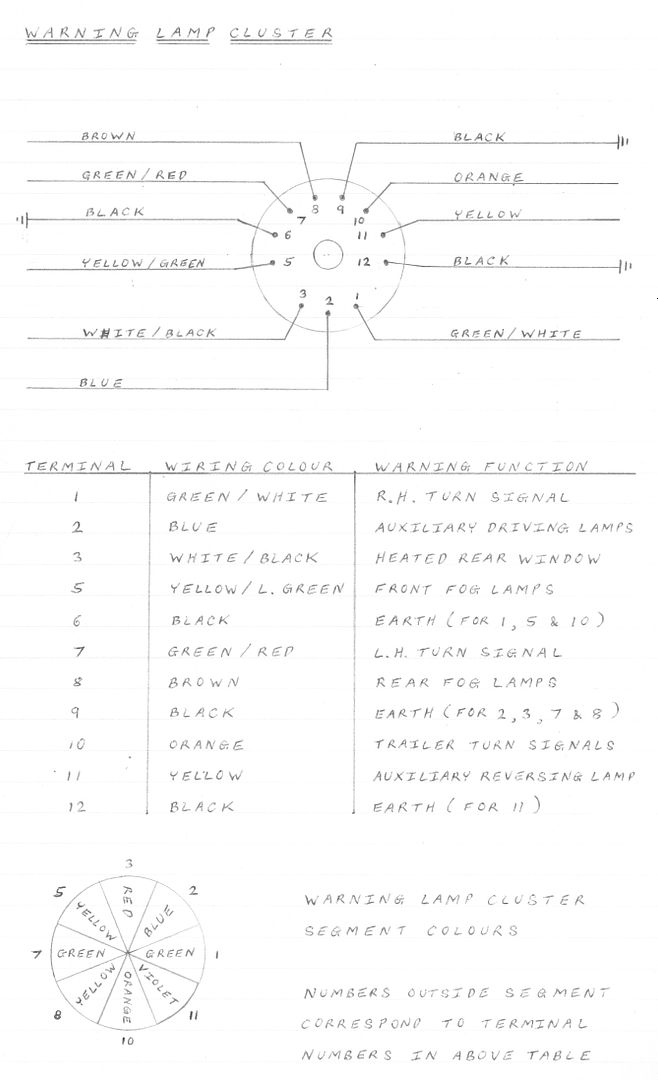
As it stands, the various instruments, warning-light cluster, hazard warning light rocker-switch & two associated relays (both mounted on the back of the instrument panel | one for the direction indicators and one for the hazard warning lights), are connected to the main wiring loom by means of two 9-way connector blocks; one colourless and one black, to avoid incorrect connection.
Before I substituted the early-model Triumph Dolomite 1850 dashboard, the Toledo speedometer’s trip-counter rotary reset-knob (with flexible drive cable), heated rear-window switch with integral tell-tale light and Kenlowe engine-cooling fan over-ride switch with tell-tale lamp, had been housed in a single home-made aluminium bracket, fastened by self-tapping screws to the underside of the original Toledo dashboard. This bracket was refitted to the Dolomite 1850 dashboard.
Retaining the Toledo’s Original Heater Unit
Because I retained the Toledo’s original heater unit, I didn’t need the Dolomite 1850’s moulded-plastic, horizontal-airflow outlet cum carburettor choke control & cigarette lighter mounting, that fits under the centre of the dashboard. Hence, I needed an alternative location for the Toledo’s original carburettor choke control, which I chose to mount in the left-hand side of the curved-profile instrument panel, between the two 52 mm gauges and the 105 mm instrument. This location proved to be quite satisfactory in service, but if I needed to remove the instrument panel for maintenance, the requirement to also remove the choke control would have been an additional inconvenience.
One advantage of retaining the Toledo’s original heater unit and omitting the Dolomite 1850’s moulded-plastic, horizontal-airflow outlet, is that one has more space available for a central console below the dashboard, to mount an audio entertainment unit, supplementary instruments and/or switches.
Substituting the Triumph Dolomite 1850 dashboard, meant discarding the original Toledo radio installation, with which the dashboard was incompatible. Although I might have been able to relocate the single speaker into the top, centre of the dashboard, I didn’t have a suitable mounting for the Radiomobile 1070 radio, so this been in long-term storage.
According to entries in my February 1995 & September 1998 issues of the Rimmer Brothers’ Triumph Dolomite parts catalogue, the heater-blower unit for the Triumph Dolomite 1300 & 1500 (part No. 819270R) has a different part number from that of the Triumph Dolomite 1500HL, 1850, 1850HL & Sprint (part No. 821464R). In what ways they differ and why, I have yet to learn, but they seem to share the same heater-blower motor (part No. RTC239)! The heater-blower units should not be confused with the different heater-box assemblies for the Triumph Dolomite 1300 & 1500 (two air-flow outlets | part No.913534) the Triumph Dolomite 1500HL, 1850, 1850HL & Sprint (three air-flow outlets | part No. 913530).
With this in mind, I shall at some time in the future, compare the heater-blower unit that I salvaged at the local fire station, from the late-model Triumph Dolomite 1500HL, and compare it with that on my 1974 Triumph Toledo 1300.
